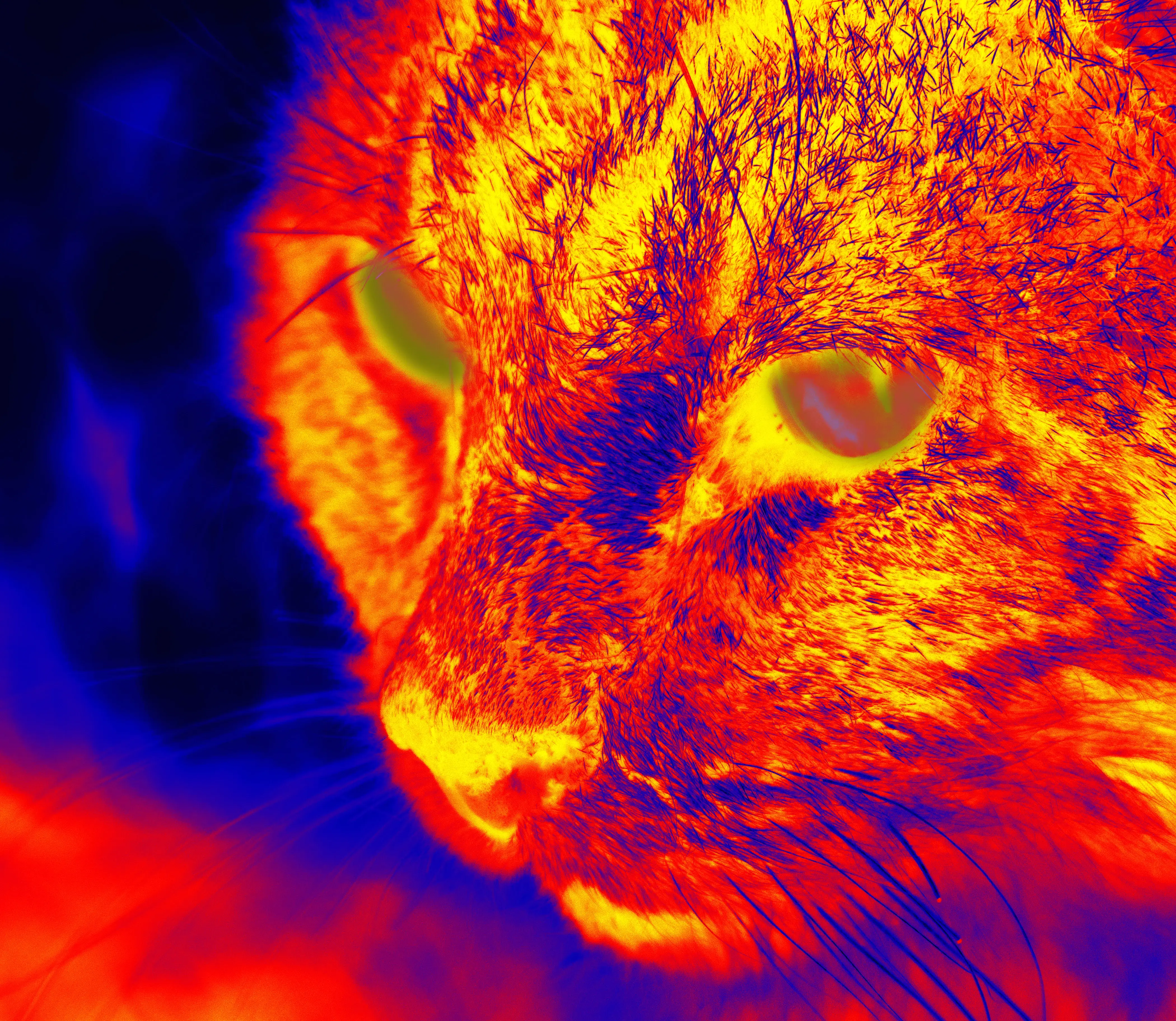Thermographic Assessment of Skin and Soft Tumors in Cats
Objectives: This study set out to determine the average temperature of skin and soft tissue
tumors in cats using infrared thermography and to investigate correlations between
thermographic findings and tumor type. Correlations between thermographic findings,
histologic subtype and tumor grade were also investigated in cases of feline injection site
sarcoma (FISS).
Methods: Thermographic images of normal skin and skin overlying neoplastic lesions were
prospectively obtained. Following thermographic assessment, tumors were resected and
submitted to histopathologic and immunohistochemical analysis. Mean temperatures detected
in tumoral areas were compared between different tumor types and between FISSs of different
histologic subtypes and grades.
Results: Thermograms obtained from 11 healthy cats and 31 cats presenting with skin and soft
tissue tumors (eight benign and 23 malignant tumors, including 21 FISSs) were evaluated in this
study. Thermal behavior varied widely in normal skin, as well as in skin overlying neoplastic
lesions. Mean temperatures were significantly higher in malignant compared with benign
tumors (35.4 ± 1.8ºC and 34.5 ± 1.7ºC respectively; P = 0.01), with a temperature above 34.7ºC
being associated with malignancy (sensitivity 76%, specificity 80%; P = 0.01). Temperatures
detected in FISS did not differ significantly according to histologic subtype (P = 0.91) or tumor
grade (P = 0.46), or between primary and recurring tumors (P = 0.25).
Conclusions and relevance: Infrared thermography proved to be a sensitive and effective
method for detection of temperature differences between malignant and benign skin and soft
tissue tumors in cats. Thermographic assessment may contribute to diagnosis and prognostic
estimation in feline oncologic patients.
Reference: Andressa Gianotti Campos Nitrini , Bruno Cogliati, Julia Maria Matera. (2021) J Feline Med Surg Jun;23(6):513-518.
| Interested in learning more about thermal imaging? Request a demonstration with Digatherm and discover how veterinary thermography can help you find problem areas faster and easily monitor treatment progress. |

